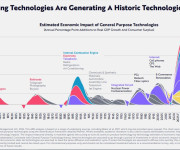Automate Company Tasks With Robotic Process Automation

Robotic processes can be as simple as saving a few clicks in a department that fills out forms all day to completing massive operation tasks without human intervention.
Plan Your Automations
What does your business need to automate? While every company will have a set of standard automation options, figuring out your full efficiency potential takes a bit of planning.
No one knows business processes better than the people doing the work on a daily basis. Employees, former employees, and consultants should be part of the interview and walkthrough processes.
If you’re building a business from the ground floor and lack current productivity professionals, there are best practices that can be added. Your business can run on automation and be improved later.
Build Your Workflows
Once the improvement areas are targeted, it’s time to design how the Robotic Process Automation system will work.
Automated process robots are designed to handle tasks and data sets. Everything from opening specific directories, simulated clicks, opening data, and even calculations can be designed.
The major limits to the RPA tool design are time and data size. The specifics of your workflows will determine how well and how quickly the process works, and workflow limits are different for every process.
Some processes may have no limit and can be set to run until there’s nothing left to satisfy its conditions. Others can be limited to certain hours, or a set time limit. Limits are flexible, and part of the design discussion.
Manage Your Deployed RPA Robots
Once deployed, it’s time to fine-tune the process. A tested and fully-functional automation plan can still be improved.
Deploying the robots into your production environment is a crucial testing and familiarization phase. To make sure that the code is compatible with your systems and functional outside of the design team’s hands, your data space is used.
Before running any tasks or setting expectations, the installation and burn-in of robots happen here.
Run Your Bots For Your Task Execution
As the robots perform your tasks, you can observe the amount of time taken to perform the task and the tasks completed. You may notice that some other tasks that weren’t noticeable or not a concern, and it’s fine to request new code development.
If the bots are operating, but not producing a final product that you would expect, it’s time to analyze the final product. Ask these questions to help developers help you:
- What is different between the human-produced and bot-produced final product?
- What processes are involved in that difference?
- Are there any finishing touches that a human could handle in the meantime?
Engage in Collaboration With Your Bots
Human intervention for tasks that can’t be automated—artistic flair, emotional impact, or vague concepts that you can’t easily explain or show—can be left as an option for human workers to step in.
Automation doesn’t have to mean complete human removal. Even in a perfect world where Artificial Intelligence (AI) can mimic, or be the same as, human actions, there’s still an option for a human worker to take control.
At present, automation design allows specific parts of the process to be changed by workers. There are right ways and wrong ways to allow human intervention, and avoiding the wrong ways is crucial.
At worst, your workers could be confused by a massive set of raw data that makes sense only to the robots. At worst, editing data and then starting up the bots could create terrible, useless data.
RPA tool developers can create a comfortable User Interface and User Experience (UI/UX), meaning an easier way to see where the process stopped and how to enter data. Part of that experience means consulting between the developers and workers.
Sharing control and allowing human workers to handle tasks before, after, and at the same time as robots is key as automation develops. From machine learning to making tool processes better, tandem human/robot tasks are the near future.
It’s a radical change to the workplace that can enhance the workforce as well. Seeing efficiency in action can give workers ideas for even better techniques, and allows creativity to blossom while staving off monotony.
For more information on robotic process design, contact a robotic process automation consultant.























